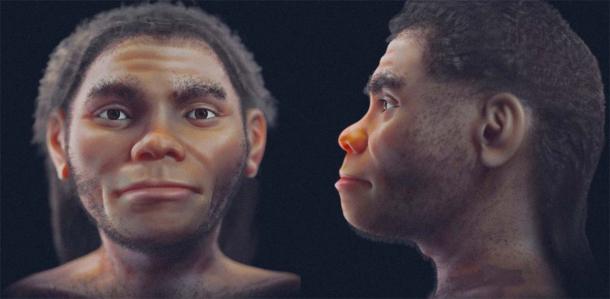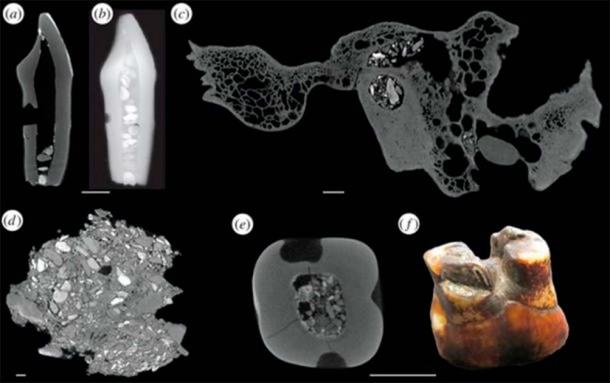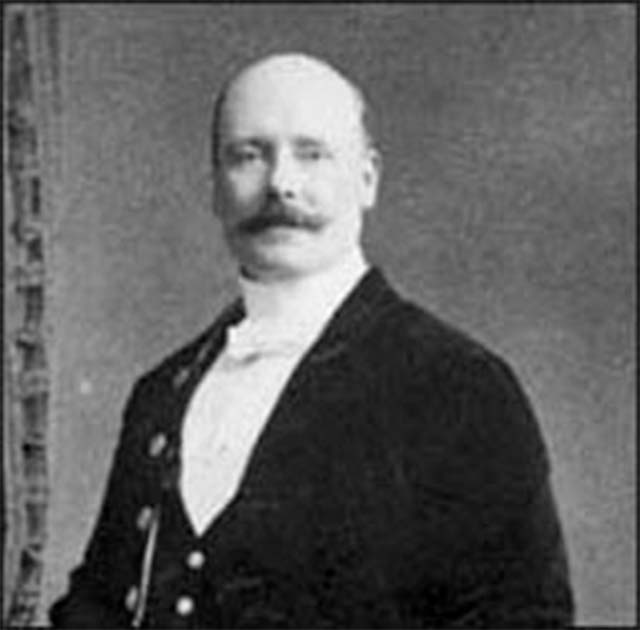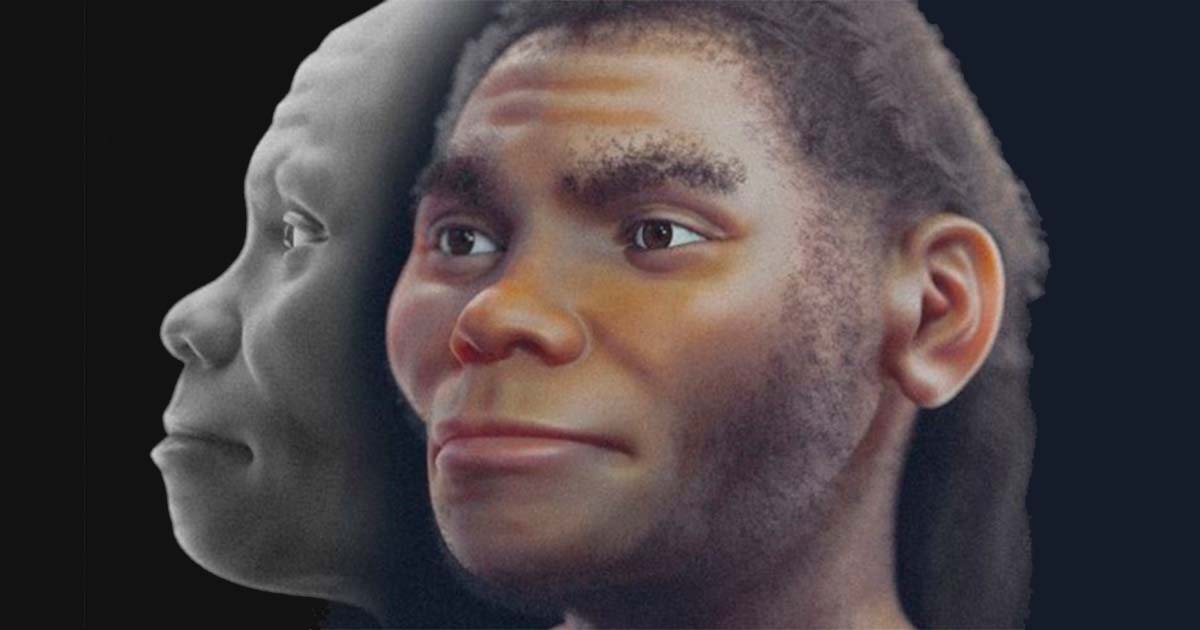Hoax Hominin ‘Piltdown Man’ Could Equally Be ‘Piltdown Woman’
The Piltdown Man scandal is arguably the greatest scientific fraud ever perpetrated in the UK, with faked fossils being claimed as evidence of our earliest ancestor. It is highly likely that an orangutan specimen and at least two human skeletons were used to create the fakes, which are still kept at the Natural History Museum. Now, a fresh discovery has indicated that Piltdown ‘Man’ could also be referred to as Piltdown ‘Woman’, due to a reassessment of the bones used in the forgery.
Britain’s Biggest Ever Hoax Story
Between 1912 and 1914 Museum palaeontologist Arthur Smith Woodward and the amateur antiquarian Charles Dawson announced the discovery of fossils from Piltdown in Sussex. These were supposedly a new evolutionary link between apes and humans. They indicated a species with both an ape-like jaw and a large braincase like a modern human. It was considered that this could be the missing link in human evolution. Before he died in 1916, Dawson claimed to have discovered further evidence at a second site.
Published 100 years on from Dawson's death, research in 2016 revealed that the forgeries were created using a limited number of specimens that were all constructed using a consistent method, suggesting the perpetrator acted alone.
The forgeries helped misdirect the study of anthropology for decades. While doubts were raised from the start, it took 40 years for the scientific community to recognize that the remains had been altered to seem ancient and had been planted in the sites.

Group portrait of the Piltdown skull being examined. Painted by John Cooke in 1915. Back row: (left to right) F. O. Barlow, G. Elliot Smith, Charles Dawson, Arthur Smith Woodward. Front row: A. S. Underwood, Arthur Keith, W. P. Pycraft, and Sir Ray Lankester. Note the painting of Charles Darwin on the wall as well. (Public Domain)
Reconstruction Reveals New Aspects of Forgery
Despite Piltdown Man being a fabricated entity, a team that includes forensic reconstruction expert and 3D illustrator Cícero Moraes has undertaken the task of visualizing this fake hominid.
Moraes created a digital representation of the creature's skull by blending scans from human, orangutan, and chimpanzee skulls. Subsequently, he modified and adjusted soft tissue markers of a human face to align with this skull model. Using his creative expertise, Moraes then added details such as skin tone and hair. The final product is a unique facial reconstruction of a non-existent ape-man species, purported to be half a million years old.

A digital reconstruction of The Piltdown Man was created using human skull fragments, chimpanzee teeth, and a female orangutan jaw (© Cicero Moraes et al.)
During the detailed research conducted by Moraes and the team when gathering data for the reconstruction, they realized something that had previously gone unnoticed.
"Using data from the original presentation and subsequent articles, we compared the jaw with other primates. We discovered an almost perfect compatibility with a female orangutan. Uniting that to the skull with very delicate features, we may have not a man, but a Piltdown Woman," proclaimed Moraes, according to The Sun.
Moraes explained that by breaking the bones and refitting them, the forger created the illusion.
"By putting the pieces together, in slightly different positions, with different rotations, what resulted was a skull that was the 'missing link' between man and monkey," he explains.
From the data gathered, Moraes and his team have produced a likeness of the ‘ape-man’ that never was.

Reconstruction of the Piltdown Man hoax hominin by Cicero Moraes et al., which likely used a female orangutan jaw matched with a human skull (© Cicero Moraes et al.)
Major Analysis Revealed the Construction Technique
Despite this interesting new twist, it was the study published in Royal Society Open Science in 2016 that really opened the lid on the details of how the hoax was pulled off.
The study was undertaken by a multi-disciplinary team from institutions in Liverpool, London, Cambridge and Canterbury using the latest scientific methods to test the Piltdown specimens to uncover more about how the forgery was done.

Timeline with the main events and discoveries in the Piltdown history. (De Groote, I. et al.)
DNA analyses revealed that both the canine from the first Piltdown site and the molar from the second site probably came from one orangutan, related most closely to orangutans now occupying south-west Sarawak (Borneo). In addition, the shape and form of the molar from the second Piltdown site was almost certainly from the other side of the jawbone planted in the first site.
3D X-ray imaging (Micro-CT scans) revealed that many of the bones and a tooth were filled with Piltdown gravel and the openings plugged with small pebbles. Holes in the skull bones were filled with dental putty, which was also used to re-set the teeth in the jaw and to reconstruct one of the teeth that fell apart while it was being ground down.
- The Glozel Controversy – Amazing Historical Discovery or Elaborate Hoax?
- The Enigma of the Voynich Manuscript: History or Hoax?

Piltdown gravel is present throughout the Piltdown I and Piltdown II assemblage: µCT scan of the Piltdown I canine ( a), radiograph from 1925 of the Piltdown canine ( b) (originally the Piltdown canine had approximately 15 gravel inclusions within the pulp chamber but all but four have now been removed through holes visible in the scan), µCT scan of the Piltdown I temporal with gravel in the cavities and plugged with a pebble in the external acoustic meatus ( c), µCT scan of the Piltdown gravel ( d), µCT scan of the Piltdown II molar with gravel in the pulp cavity ( e), Piltdown II molar with pebbles in the roots ( f). (De Groote, I. et al.)
Dr Laura Buck co-author on the paper from the Division of Biological Anthropology, University of Cambridge commented on the project's importance. "Even today, over a hundred years after the Piltdown fraud was perpetrated, it remains relevant because of the huge impact it had on the course of Palaeoanthropological research at the beginning of the twentieth century."
"Fossil human remains from Africa, such as the Taung child from South Africa, were largely ignored when first found because they didn't fit with preconceptions of what an early human relative would look like, based on Piltdown Man. This serves as an important reminder to researchers today to study what is there and not what we think should be there," Buck said.
Dr Isabelle De Groote from Liverpool John Moores University and lead author on the paper, thinks the results point to a clear conclusion: "Although multiple individuals have been accused of producing the fake fossils, our analyses to understand the modus operandi show consistency between all the different specimens and on both sites. It is clear from our analysis that this work was likely all carried out by one forger: Charles Dawson."

Portrait of Charles Dawson. (Public Domain)
Top image: Reconstruction of the Piltdown Man hoax hominin by Cicero Moraes et al. Source: (© Cicero Moraes et al.)
By Gary Manners
References
De Groote, Isabelle, 2016. New Piltdown hoax analysis points to work of 'lone forger'. University of Cambridge.
Isabelle De Groote, Linus Girdland Flink, Rizwaan Abbas, Silvia M. Bello, Lucia Burgia, Laura Tabitha Buck, Christopher Dean, Alison Freyne, Thomas Higham, Chris G. Jones, Robert Kruszynski, Adrian Lister, Simon A. Parfitt, Matthew M. Skinner, Karolyn Shindler, Chris B. Stringer. New genetic and morphological evidence suggests a single hoaxer created ‘Piltdown man’. Royal Society Open Science, 2016; 3 (8): 160328 DOI: 10.1098/rsos.160328

















